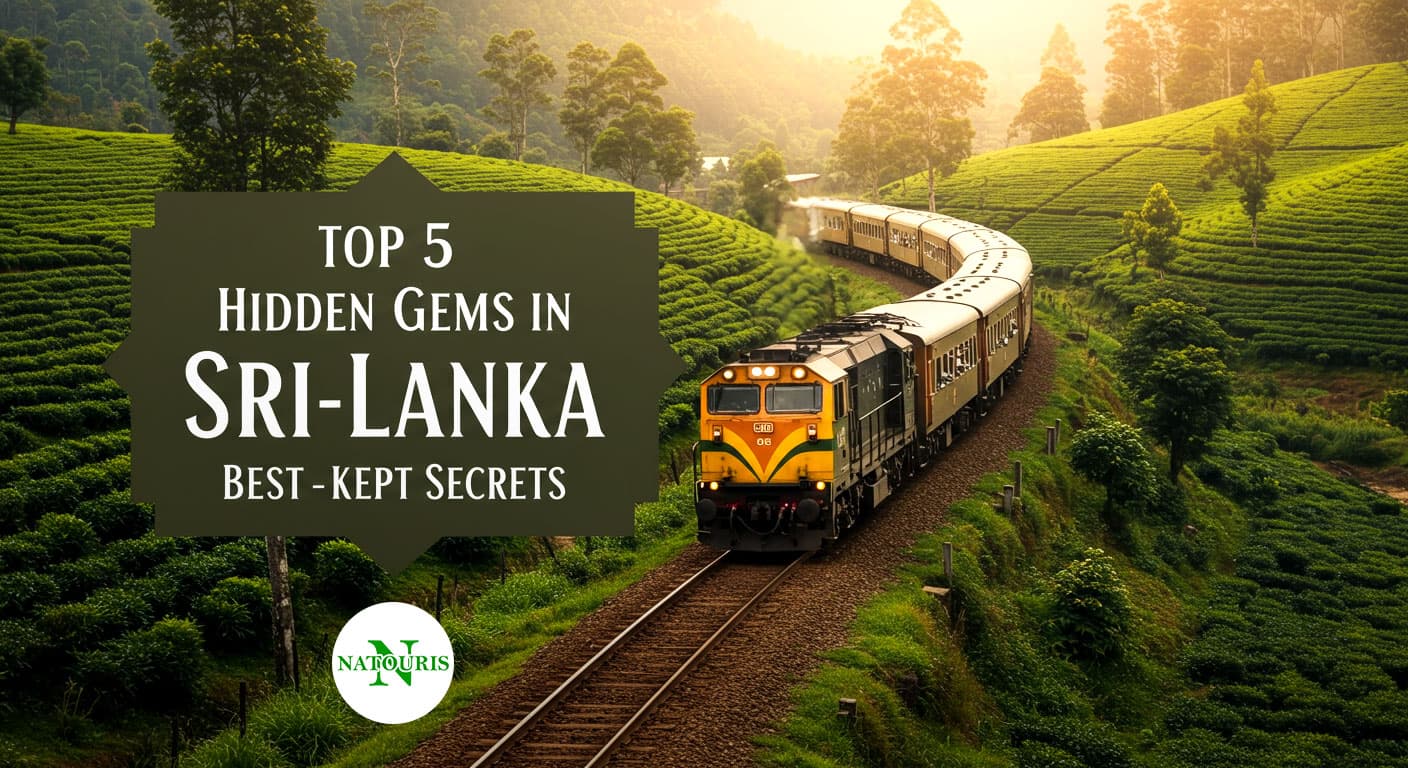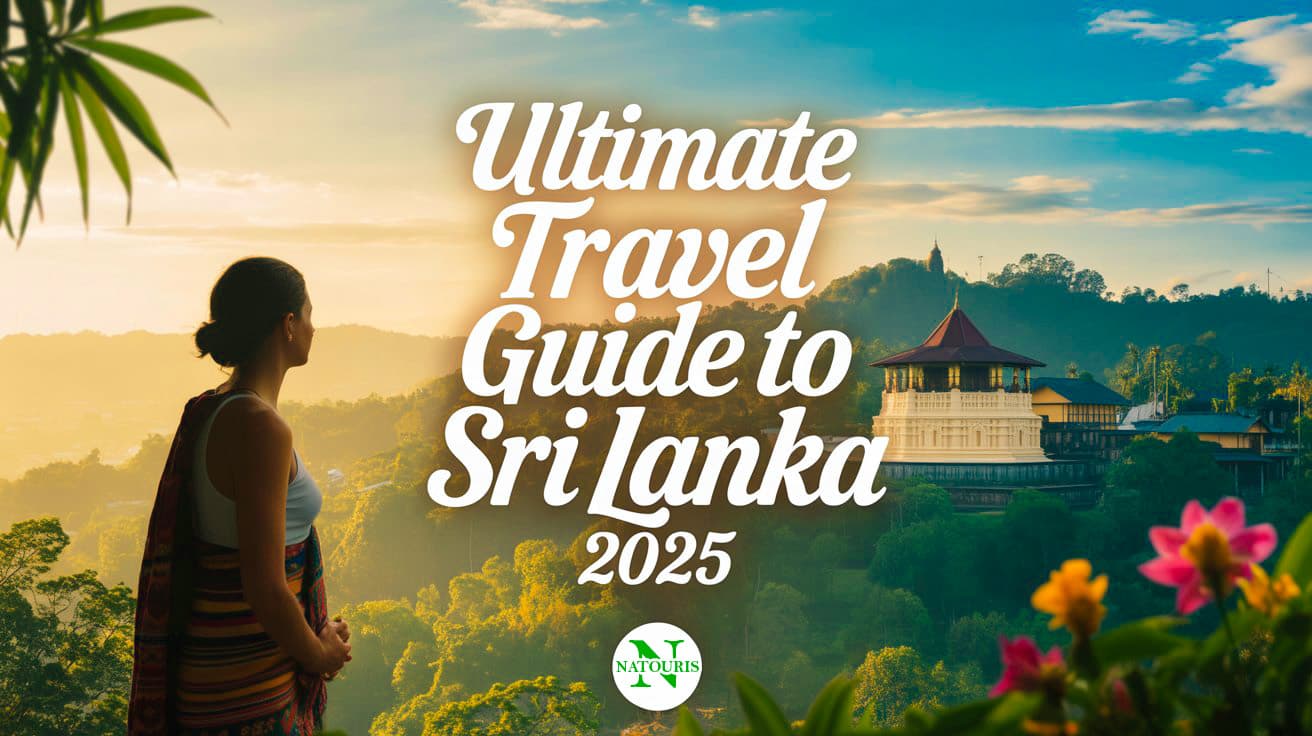Top 15 MUST-TRY Street Foods in Colombo, Sri Lanka (2025 Guide)
 https://res.cloudinary.com/daknktzcc/image/upload/v1761162838/Top_15_MUST-TRY_Street_Foods_in_Colombo_Sri_Lanka_2025_Guide_biiddv.webp?height=600&width=800
https://res.cloudinary.com/daknktzcc/image/upload/v1761162838/Top_15_MUST-TRY_Street_Foods_in_Colombo_Sri_Lanka_2025_Guide_biiddv.webp?height=600&width=800Top 15 MUST-TRY Street Foods in Colombo, Sri Lanka (2025 Guide)
Colombo isn't just a city; it's a vibe.
It’s the chaotic, colorful, and wildly delicious heart of Sri Lanka. As someone who was born and raised here, I can tell you that to really understand Colombo, you have to eat on its streets. It’s where the real culture lives.
Forget quiet, polite dinners. We’re talking about food that’s loud, spicy, and unapologetically messy. It’s the clatter of metal blades on a hot plate making kottu, the sizzle of a vade hitting hot oil, and the sweet relief of a king coconut on a blazing hot day.
I spent a full day (and night) hitting up all my hometown favorites from morning herbal porridge on the side of the road to the trendy new night markets popping up to build this guide. This isn't just a list; it's a full-day eating itinerary.
So, grab a napkin (you’ll need it) and let's go. This is the first article in our new Pekoe Trail series, and we're starting strong. Here are the 15 street foods you simply cannot miss in Colombo.
The Morning Ritual (7 AM - 10 AM)
Mornings in Colombo start early, and they start healthy... well, mostly. We’re kicking things off on Marine Drive, with the Indian Ocean on one side and the commuter train rattling by on the other.
1. Kola Kanda (Herbal Porridge)
Before you dive into the spice, you need to try Kola Kanda. Think of it as a warm, green smoothie, but a thousand times more comforting. It’s a traditional herbal porridge made from nutritious local greens (like vally panda), cooked down with coconut milk and a little bit of rice.
You'll see little trucks and stalls all along the road serving it. They often have a few types, including an amazing white garlic kanda, which is incredible for your system.
Pro Tip: Ask them to mix two varieties. I love mixing the garlic kanda with a green one. It’s the kind of breakfast that makes you feel good about your future life choices.
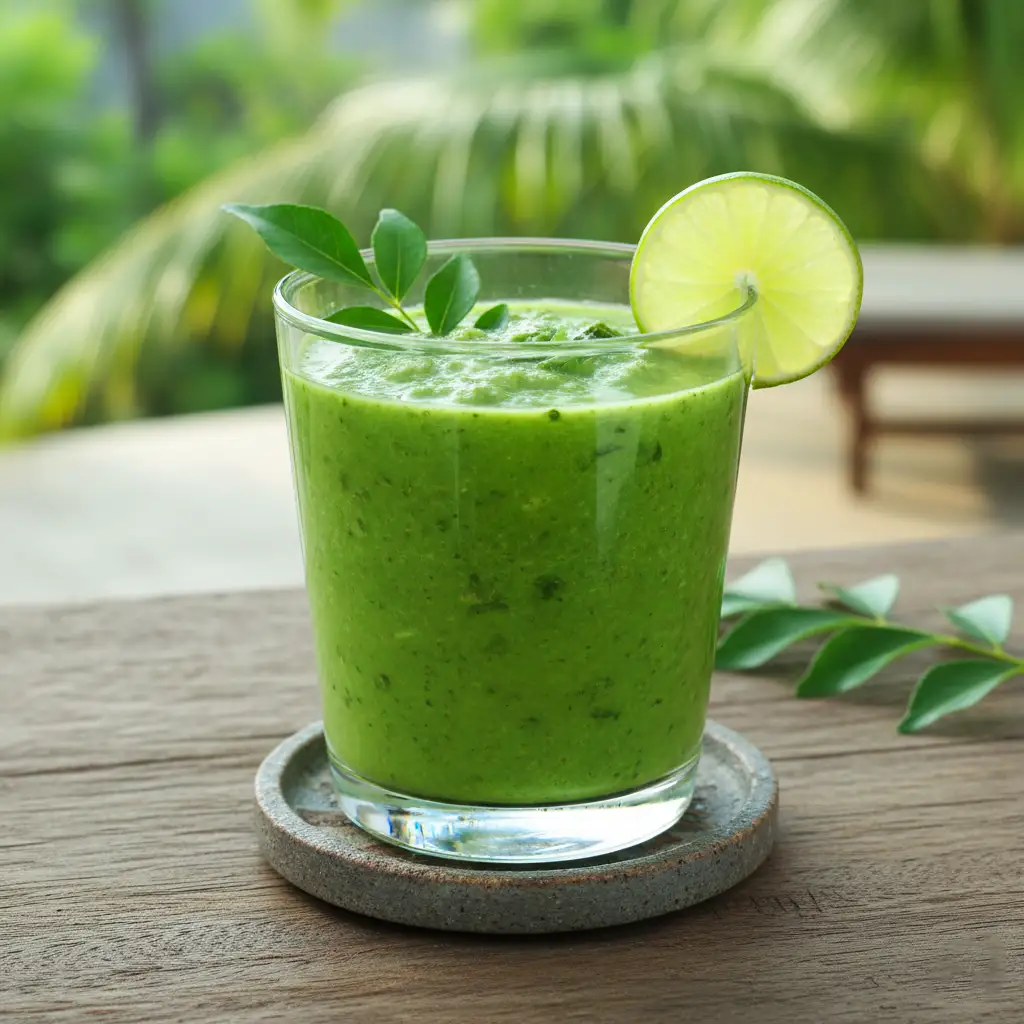
2. Boiled Manioc with Lunu Miris
Right at that same breakfast spot, you’ll find this classic. Manioc (or Manyokka) is a type of yam, basically Sri Lanka's answer to the potato. It’s boiled until it's perfectly soft and fluffy.
But the star is the Lunu Miris it’s served with. This isn't just a side dish; it's a flavor explosion. It’s a spicy sambol made from crushed red chili, onions, lime juice, and salt. You take a piece of the soft manioc, dip it in the fiery lunu miris, add a little freshly grated coconut to balance the heat, and... wow. It’s simple, it's hearty, and it’s so, so good.
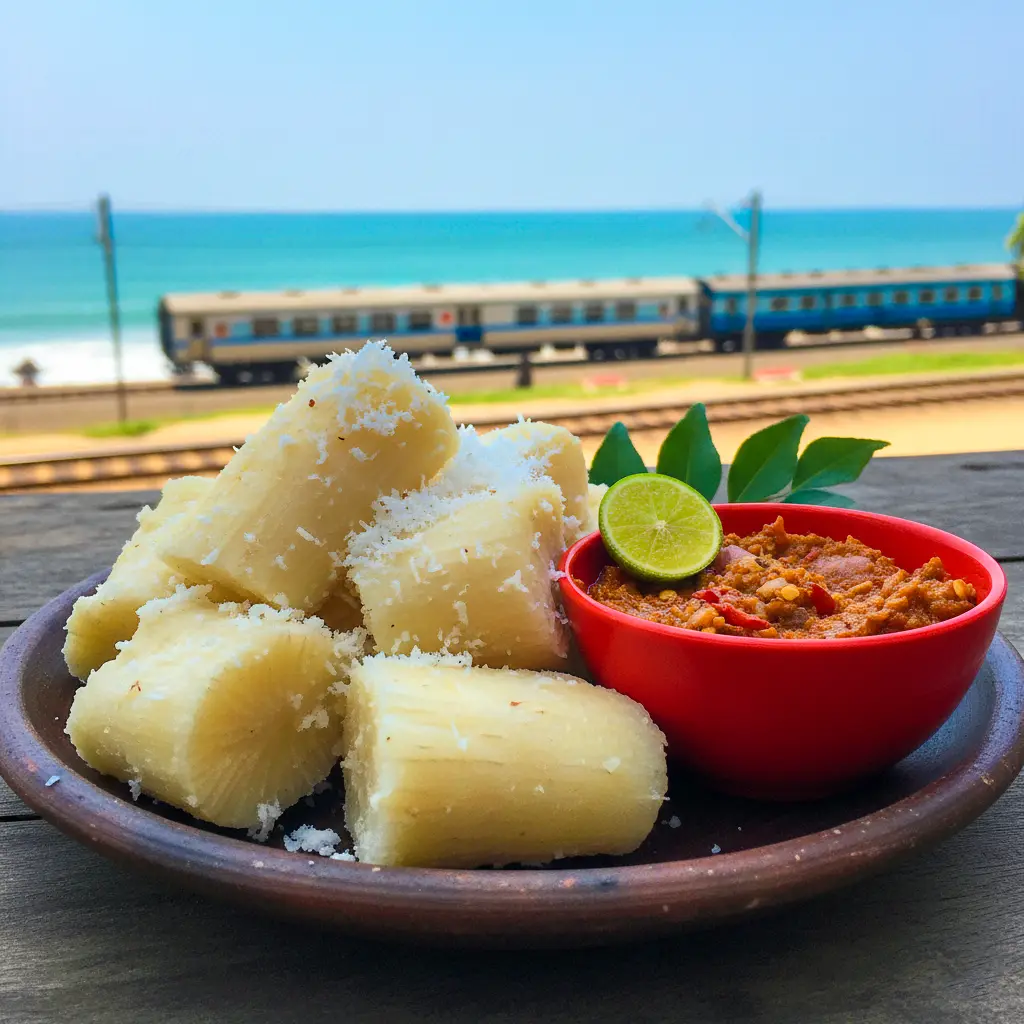
The Pettah Pulse (11 AM - 3 PM)
After a calm breakfast, it's time to dive straight into the chaos. We’re heading to Pettah Market.
Calling this place "busy" is an understatement. This is the pulse of the city. It’s loud, it's packed, and it's where everything happens. It's one of the oldest markets in the country, and thanks to centuries of traders, it's a melting pot of cultures and, more importantly, food.
3. Achcharu (Spicy Pickled Fruit)
This is the ultimate Sri Lankan snack. Achcharu is basically any fruit think unripe mango, pineapple, Sri Lankan olive (veralu), or jambu chopped up and mixed in a bag with salt, chili powder, a little sugar, and vinegar or lime juice.
It’s a riot of flavors. It's sweet, sour, spicy, and salty all at once. My mom always gets her achcharu from Pettah, and I have such strong memories of this snack. Be warned: it can be very spicy, but that’s the whole point.
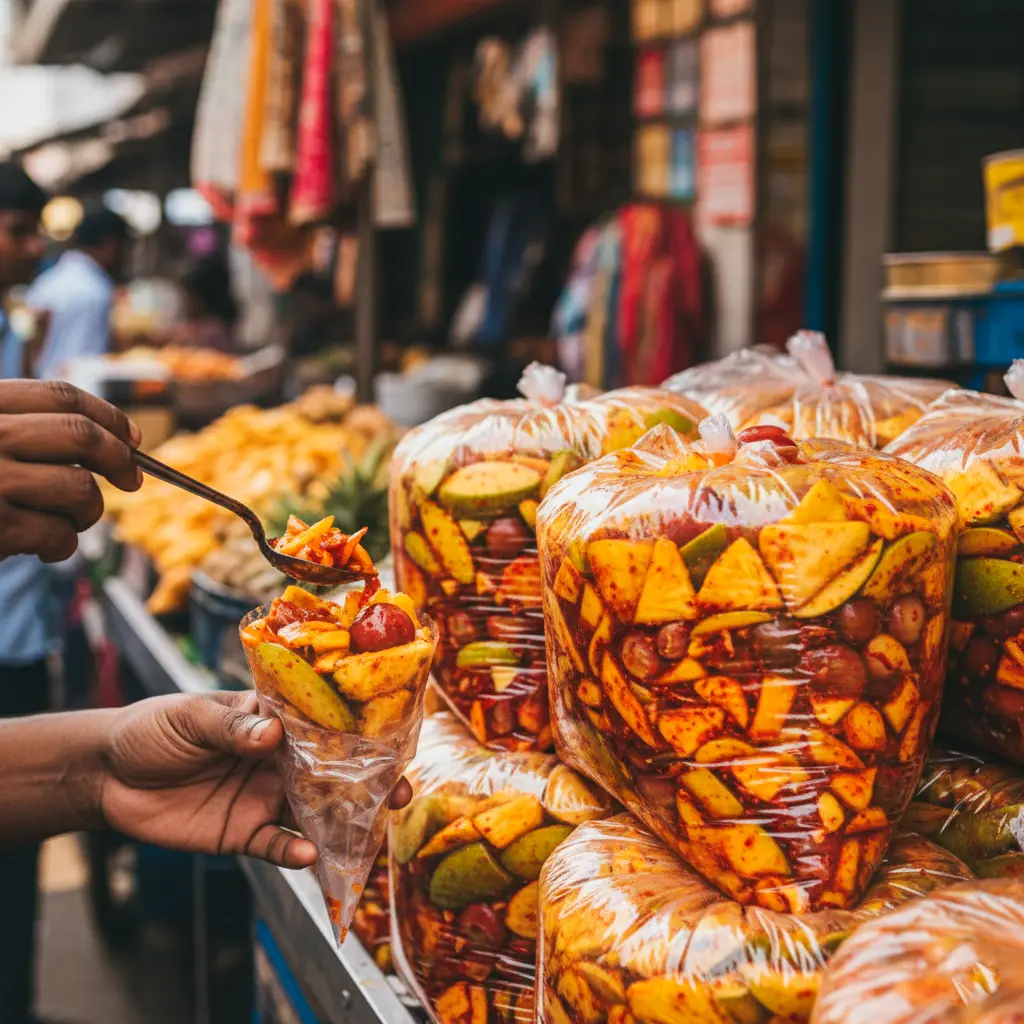
4. King Coconut (Thambili)
By now, it's almost noon, and the Colombo heat is no joke. It's time to hydrate. Forget bottled water; you need Sri Lanka’s very own natural electrolyte drink: the King Coconut, or Thambili.
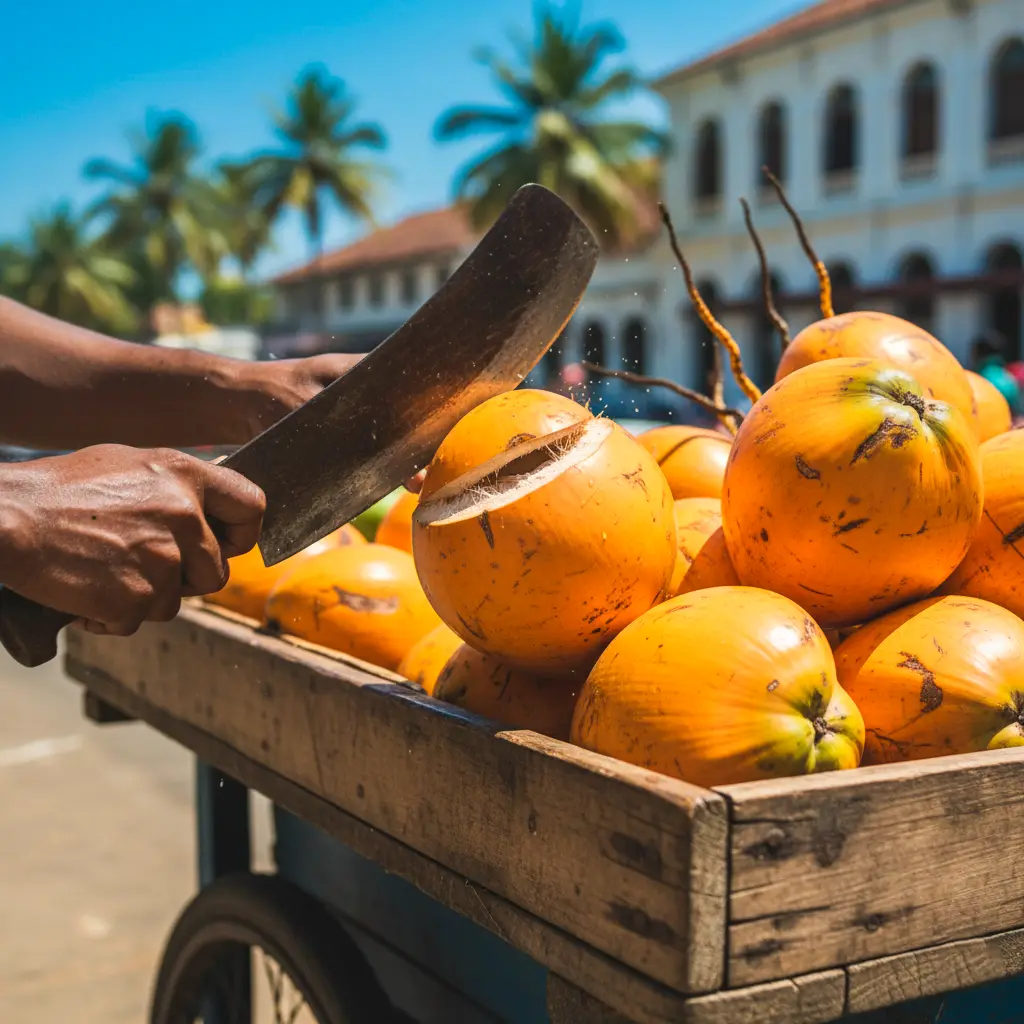
You’ll see them piled high on carts. These are different from the green coconuts you might find in Thailand. The water is often much sweeter, and it's incredibly refreshing. Once you’re done drinking the water, hand it back to the vendor. They’ll crack it open with a machete and carve out a little spoon from the husk so you can scrape out the soft, jelly-like flesh inside. It’s a snack and a drink in one.
5. Samosas & Vegetable Roti
As you walk through Pettah, you’ll be hit by the smell of deep-fried goodness. Follow that smell. You'll find little bakeries and stalls, like the famous Bombay Sweets, that are heavily influenced by the Muslim community.
You have to try the samosas. Here, they're often filled with chicken or beef, packed into a flaky pastry, and fried. They’re crunchy, warm, and have a beautiful, savory minced-meat curry flavor.
Don’t miss the vegetable roti (or Elawalu roti). It’s a classic "short eat" (what we call snacks). It's a soft, flaky flatbread folded into a triangle and stuffed with a mild, peppery filling of potatoes, leeks, and other vegetables.

6. Faluda
This is your dessert. After all that spice, you need something sweet and decadent. Faluda is a Persian-inspired drink that’s wildly popular here.
It’s a bright pink, rose-flavored milk drink layered with ice cream, basil seeds (which look like chia seeds), and sweet jelly. It’s rich, it's creamy, and it tastes almost like a perfume. It can be very sweet, but on a hot day in Pettah, it's pure magic.
7. Crispy Manioc Chips
Before you leave Pettah, you have to stop at a "gram store." These shops sell all kinds of snacks by the gram. You’ll see biscuits, fried dough snacks (murukku), nuts, and seeds.
You are here for one thing: the crispy manioc chips. We had boiled manioc for breakfast; this is its "less healthy but more fun" cousin. The manioc is sliced paper-thin, deep-fried until golden, and then tossed in salt, pepper, and chili.
I promise you, these are better than any potato chip you’ve ever had. The crunch is incredible.
The Evening Hustle (5 PM - 8 PM)
As the sun starts to set, all of Colombo heads to one place: Galle Face Green.
This is a massive park that stretches along the coast, right in front of the historic Galle Face Hotel. It’s the spot for evening snacks. This brings us to one of your most common questions:
What is the best time to visit Galle Face Green for food stalls?
Simple: Sunset. Aim to get there around 5:30 PM. The vibe is amazing. You'll see families flying kites, couples walking, and everyone lining up at the endless row of food carts.
8. Isso Vade (Prawn Vade)
This is the king of Galle Face Green snacks. You'll see carts piled high with them. The vade itself is a deep-fried fritter made from dal (lentils), a bit like a falafel. But what makes it an isso vade is the stack of whole prawns shell, head, and all pressed on top before frying.
It’s served with raw onion and a squeeze of fresh lime. It’s crunchy, a little soft on the inside, and has that amazing tangy, savory flavor.
9. Crab Vade
Right next to the isso vade, you’ll often find its more adventurous sibling: the crab vade. Yes, it’s a whole small crab, deep-fried until it’s crispy like a soft-shell crab, and served on top of that same lentil fritter. It's crunchy, tasty, and surprisingly easy to eat.
10. Kottu Roti (The Icon)
Okay, let's talk about the big one. You can't come to Sri Lanka and not eat Kottu Roti. While you can find it at Galle Face Green, it’s a dish that truly owns the night all over Colombo.
What is Kottu Roti? It's more than food; it's a performance. It starts with godhamba roti (a thin, flaky flatbread). The "chef" throws it on a giant flat-top grill, adds vegetables, egg, your choice of meat (or keep it veg), and a healthy dose of curry and spices. Then, he takes two metal blades and starts rhythmically chopping and mixing everything right on the grill.
Clack-clack-clack-clack-clack.
It's a sound that echoes down the streets of Colombo every night. The result is a pile of soft, chewy, spicy, and savory chopped-up bread and curry. It's the ultimate comfort food.
Where can I find the best kottu roti in Colombo?
This is a question that starts fights among locals! Everyone has their favorite. The stalls at Galle Face Green (like NANA's) are famous and a great experience. For a classic, late-night vibe, Hotel de Pilawoos (it's more of a simple eatery than a "hotel") is an institution.
The Late-Night Scene (9 PM - 1 AM)
The city doesn't sleep, and neither does its food scene. In the last few years, a whole new wave of night markets has popped up, often run by young students and entrepreneurs.
11. Aluthkade's Omelette Sandwich
The most famous of these new spots is Aluthkade. This area has been around forever, but it's recently become a trendy hot spot for late-night eats. It’s chaotic, it’s smoky from all the barbecue, and it’s a must-visit.
The star here is a surprisingly new invention: the omelette sandwich. They take a sandwich (often with spicy chicken and mayo), then dip the entire thing in a beaten egg mixture and grill it, so it's wrapped in a thin, savory omelette. It's light, it's tasty, and it's brilliant.
12. Aluthkade's Barbecue Chicken
You will smell the barbecue long before you see it. The entire street is lined with grills. The spicy barbecue chicken here is fantastic. It's tender, charred, and slathered in a delicious, peppery, spicy sauce. Grab a piece and eat it standing on the street.
13. Egg Roti with Chicken Curry
This is my personal favorite late-night snack. It's simpler than kottu but just as satisfying. You get one or two fresh egg rotis (a godhamba roti with an egg cooked inside) served with a side of peppery chicken curry (or dhal for a veg option) and some raw onions.
You tear off a piece of the hot, buttery roti, dip it in the gravy, grab an onion, and it's just... perfect.
14. Kuluki Sharbath
You'll need something to drink with all that barbecue. Look for the stalls making Kuluki Sharbath. It’s a super sweet and minty drink, often served with a whole green chili dropped in it. Don't worry, it's not really spicy (unless you bite the chili!), but it's a fun, refreshing local favorite.
15. "Pulled" Milk Tea
You can't end your food tour without a proper Sri Lankan tea. But I'm not talking about fancy Ceylon tea in a pot. I'm talking about the strong, sweet milk tea you get from roadside shops.
They make it with condensed milk (which is why it's so good) and then "pull" it pouring it back and forth between two metal jugs from a great height. This creates a thick, delicious froth on top. It's the perfect, sweet end to a long night of eating.
Your Colombo Street Food: FAQs Answered
I get these questions all the time, so let's clear them up.
Are street foods in Colombo safe for tourists to eat?
This is the big one. Let's be honest: your stomach might not be used to the water, the spices, or the environment. I've been eating this food my whole life. On my most recent all-day food crawl for this article, I ate everything (except the meat) and felt totally fine the next day!
Here’s my advice:
- Follow the crowds: If a stall is busy with locals, it's a good sign. It means the food is fresh and turnover is high.
- Go for hot food: Choose things that are cooked-to-order right in front of you (like kottu, barbecue, or fresh-fried vade) over things that have been sitting out.
- Use your senses: If it looks clean and smells good, it probably is.
- Ease into it: Maybe don't try the crab vade and the spicy achcharu on your very first night. Start with a kottu or a vegetable roti.
Which area in Colombo has the best street food scene?
There’s no single "best" area; it depends on the time of day!
- Pettah Market: Best for daytime snacks (11 AM - 3 PM).
- Galle Face Green: The undisputed champion for evening snacks and sunset vibes (5 PM - 9 PM).
- Aluthkade: The new, trendy king of late-night food (9 PM - 1 AM).
Can vegetarians enjoy Colombo street food?
Absolutely! As a vegetarian myself, I had no problems. There are so many amazing vegetarian street food Colombo options:
- Kola Kanda
- Boiled Manioc & Lunu Miris
- Achcharu
- King Coconut
- Vegetable Roti
- Manioc Chips
- Faluda
- Vegetable Kottu and Dhal Kottu are available everywhere.
- Hoppers (a crispy, bowl-shaped pancake) are another famous dish, and the plain or egg versions are perfect for vegetarians.
What drinks pair well with Sri Lankan street food?
Besides the King Coconut, Faluda, and Milk Tea I mentioned?
- EGB (Elephant House Ginger Beer): This is our local ginger beer. It's fiery, sweet, and cuts through spicy food perfectly.
- Kuluki Sharbath: The sweet, minty drink from the night markets.
- Lion Lager: If you're looking for a beer, this is the local go-to.
How much does typical Colombo street food cost?
This is the best part. It is so cheap. You'll be eating like royalty for pennies.
- Snacks (Vade, Samosa, Roti): $0.25 - $0.75 USD (approx. 50 - 250 LKR)
- Kottu Roti (full plate): $1.50 - $3.00 USD (approx. 450 - 900 LKR)
- King Coconut: $0.50 USD (approx. 150 LKR)
You can have a massive, full day of eating for under $15-$20.
Are there local food tours for exploring Colombo’s street eats?
Yes, and they're a great idea if you're nervous about exploring on your own. A tuk-tuk food tour in Colombo is a really popular way to hit all the best spots with a local guide who knows exactly where to go.
My Final Bite
Colombo's street food is more than just a list of things to eat. It's the story of the city. It’s the history of the traders in Pettah, the families relaxing at Galle Face, and the new generation creating their own traditions in Aluthkade.
This city is an experience for all five senses, and the best way to dive in is with an empty stomach and an open mind.
This is just our first stop on the Pekoe Trail. We’ve eaten on the streets, but next, we're exploring Colombo's best cafes, restaurants, and nightlife.
So, I want to know: Which of these 15 foods are you trying first? And if you've been to Colombo, did I miss your favorite spot? Let me know!
Share this article

Tharindu Madhusanka
Travel blogger, photographer, and lifelong explorer of Sri Lanka’s hidden gems.
View all posts

